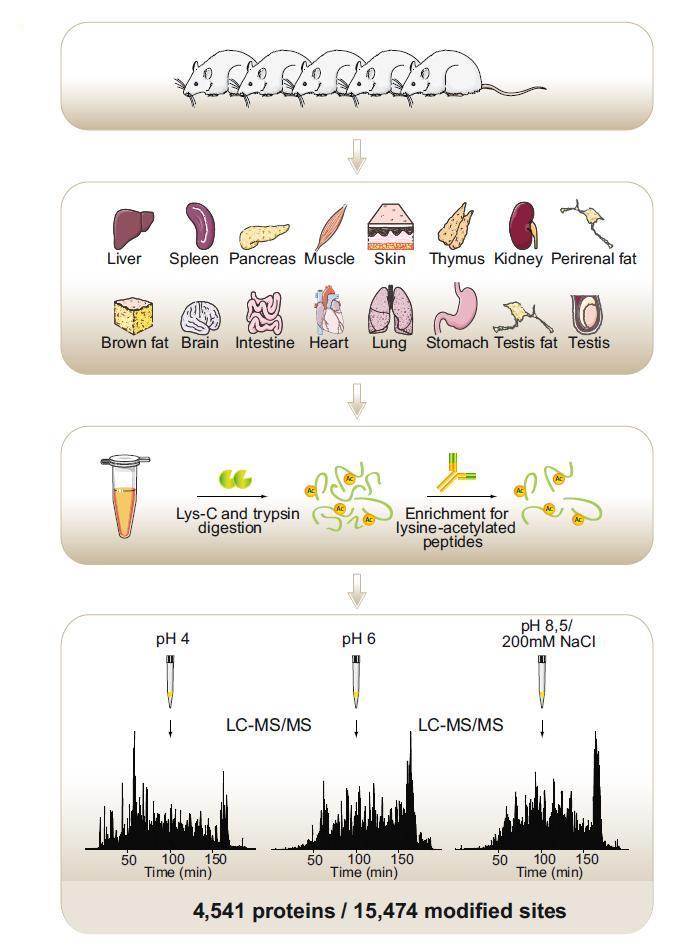CPR scientists generates organ-wide map of protein acetylation sites in vivo:
Protein acetylation is a post-translational modification (PTM) involved in a broad array of physiological processes. It has long been speculated that the prevalence of lysine acetylation and its impact on cellular processes matches that of phosphorylation. But, to explore the physiological relevance of lysine acetylations, it is essential to know which proteins are in fact acetylated in vivo and in which tissues these modifications occur. By combining an efficient method for protein extraction from tissue samples with lysine-acetylated peptide immunoprecipitation and high-accuracy tandem mass spectrometric (MS/MS) measurements, a collaborative CPR study have generated the broadest atlas of lysine acetylation sites to date from 16 different rat tissues; 15,474 modified sites on 4,541 proteins.
From this comprehensive data set, the CPR scientists  provide evidence that the occurrence of lysine acetylation is indeed comparable to that of phosphorylation. They show that specific proteins and sites are acetylated to different extents in different tissues, and that the distribution of lysine-acetylated proteins in subcellular compartments (nucleus, cytoplasmic organelles, golgi apparatus,etc.) is tissue specific. The dataset also allowed them to delineate lysine acetylation specific sequence motifs and to their surprise, they found these motifs to be specific for the different subcellular compartments. With this study Alicia Lundby et al. demonstrate that lysine acetylation is involved in multiple fundamental physiological processes, such as muscle contraction and metabolism. The researchers also show that for two important metabolic enzymes in the glycolytic pathway site-specific acetylation function to switch off enzymatic activity, adding another layer of posttranslational regulatory control to dynamic cellular processes. The study was recently published in Cell Reports.
provide evidence that the occurrence of lysine acetylation is indeed comparable to that of phosphorylation. They show that specific proteins and sites are acetylated to different extents in different tissues, and that the distribution of lysine-acetylated proteins in subcellular compartments (nucleus, cytoplasmic organelles, golgi apparatus,etc.) is tissue specific. The dataset also allowed them to delineate lysine acetylation specific sequence motifs and to their surprise, they found these motifs to be specific for the different subcellular compartments. With this study Alicia Lundby et al. demonstrate that lysine acetylation is involved in multiple fundamental physiological processes, such as muscle contraction and metabolism. The researchers also show that for two important metabolic enzymes in the glycolytic pathway site-specific acetylation function to switch off enzymatic activity, adding another layer of posttranslational regulatory control to dynamic cellular processes. The study was recently published in Cell Reports.
